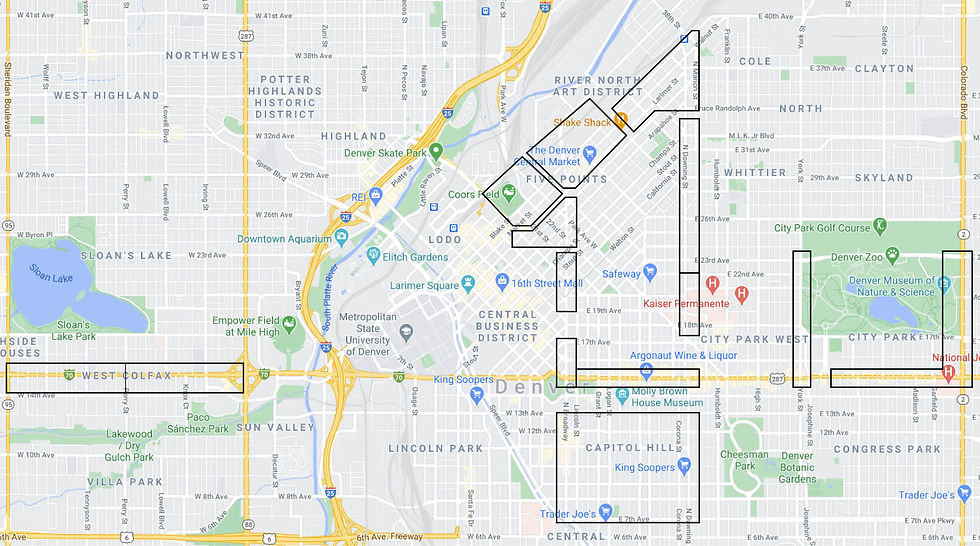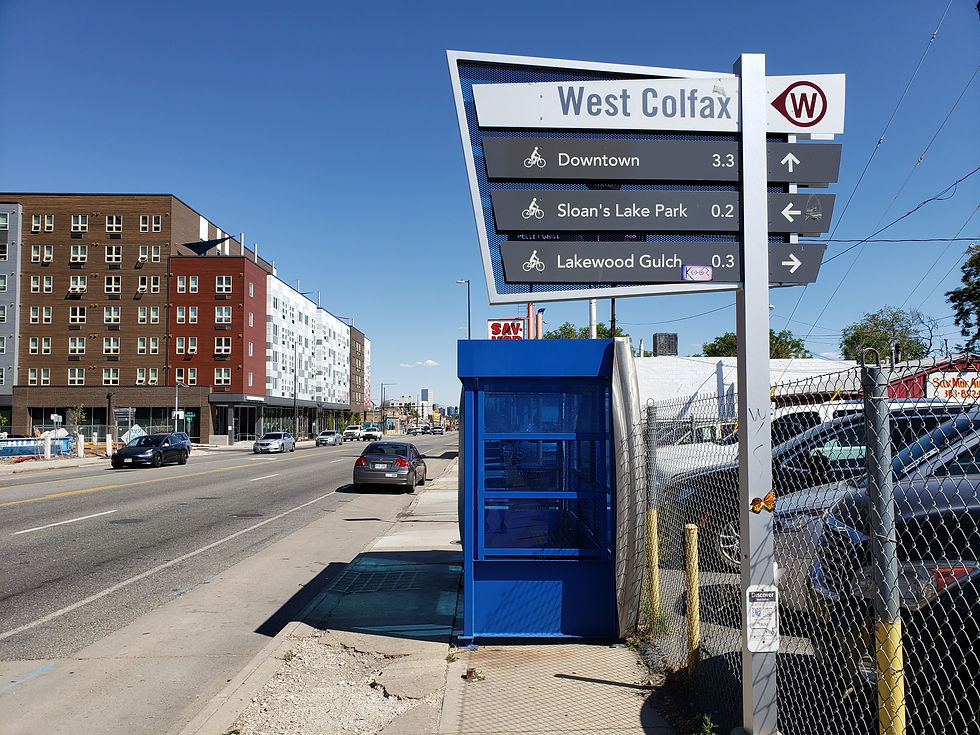Graduate Students Find COVID-19 Highlights the Infrastructure Disparities Transit Riders Face Daily
- denvercalc
- Jan 29, 2021
- 3 min read
Updated: Feb 16, 2021
Blog post by Rey Sosa, CALC Safe Routes Advocate and MURP Student

Over the fall, first year students in the graduate Urban and Regional Planning program at the University of Colorado Denver worked together with Denver Streets Partnership (DSP) and Denver Department of Transportation and Infrastructure (DOTI) to better understand the current conditions of various bus stops on key bus corridors. As part of the City’s comprehensive Denver Moves Transit Plan released in 2019, Denver looks to make transit a priority in the efforts to combat rising traffic congestion and the associated environmental problems it brings. Part of this commitment involves understanding the current infrastructure, or lack of, present at various bus stops in Denver. Transit amenities are owned and managed by a variety of partners in Denver, and DOTI is looking to supplement RTD’s efforts where possible to enhance the ridership experience.
Though the entire semester was held virtually via Zoom, this did not deter the groups of students in working together to assess and provide recommendations for the bus stops they studied. Each student group was assigned a specific neighborhood area to understand nine local bus stops and the built area around them. These focus areas included parts of downtown Denver and some adjacent neighborhoods, as well as the West Colfax neighborhood. As part of the study assignment, each group also had the opportunity to virtually meet with local residents to get a better idea of how these bus stops are used.

A universal observation from the students highlighted that the majority of bus stops were found to be simply a dilapidated pole with minimal RTD signage. Many bus stops lacked any rider amenities such as either a shelter, bench, and/or lighting. Many of the bus stop locations were unkempt with litter strewn around and adjacent vacant, boarded up businesses that reduced the feeling of safety for waiting patrons. Few bus stops were incorporated into the overall neighborhood fabric; many simply existed separate from newer developments. The ongoing pandemic exacerbates many of these issues, as current bus riders are forced to wait longer times than usual for a bus that may be delayed, operating at limited frequency, or already at full capacity.

The students made a number of suggestions centered on improving the physical infrastructure around these bus stops. For certain bus stops, local residents who participated in the virtual focus groups brought up the perceived lack of safety and comfort due to the neglected appearance brought by the lack of permanent infrastructure. The students recommended that neighborhood wayfinding signage be added to highlight the amenities and activity around, modeled after newer bus stops on West Colfax installed by the West Colfax Business Improvement District that point to local businesses nearby. Other suggestions brought up are broader fixes such as improving the frequency of buses to reduce or eliminate long wait times in potentially uncomfortable places. One student group noticed that their study area included two bus stops located less than 75ft apart from each other across the street; this could be a simple fix to consolidate bus stop infrastructure into one area. Local residents also mentioned that many of the streets in the study areas were high speed arterials that saw heavy traffic, making it less pleasant and safe to catch a bus.
The students’ reports and recommendations will help inform efforts underway to improve the transit experience in Denver. Both the Colorado Dept of Transportation (CDOT) and DOTI have plans for improvements to West Colfax Avenue, a state-owned highway and a major transit thoroughfare. CDOT recently released a project list which includes $20 million for West Colfax earmarked for, “enhanced crosswalks, lighting, medians and improvements for buses and bikes.” The City also has its own transit improvement projects planned for West Colfax, as well as the East Colfax and Broadway/Lincoln corridors. RTD is also currently in their “Reimagine RTD” process to engage customers and partners on how RTD can meet long-term mobility needs for the region.
If you’d like to read the student reports in-depth, you can download and browse through the final reports here.




Comments